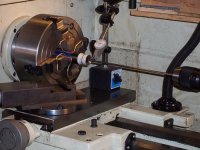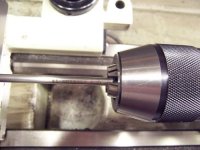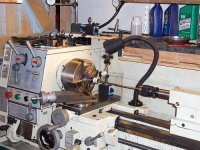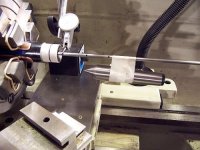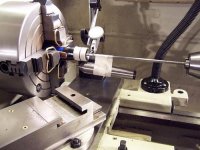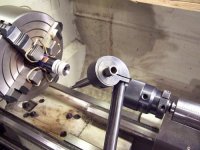OK Jerry, I'm gonna' try this.....
I'll do it in a series of posts. Try not to get loooong.
Step #1-
I decided to rechamber an old 6BR barrel to make a 6X47L ff barrel. The guy who fitted this indicates both ends so I decided to set it up this way for starters. I want the chamber to be square to the threads. So I set it up as shown here, dialed in muzzle bore on outboard side and chamber on headstock side. In my opinion this setup is centered on the axis of the machine as well as if between centers.
(For now we'll assume the machine is true..... NO allowances made for play/slop/flex etc)
Setup is FINGER TIGHT on both ends..... no bending.
Muzzle dialed to zero in spider
chamber dialed to zero
Pix below.
#1- pic of lathe to show overview of setup
#2- pic of headstock side, chamber indicator
#3- pic of outboard 'spider' side
#4- closeup of spider assy
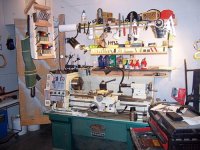
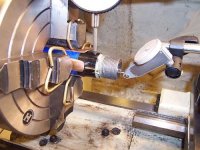
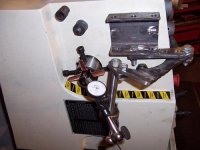
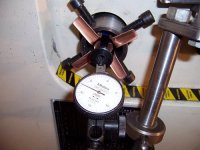
I'll do it in a series of posts. Try not to get loooong.
Step #1-
I decided to rechamber an old 6BR barrel to make a 6X47L ff barrel. The guy who fitted this indicates both ends so I decided to set it up this way for starters. I want the chamber to be square to the threads. So I set it up as shown here, dialed in muzzle bore on outboard side and chamber on headstock side. In my opinion this setup is centered on the axis of the machine as well as if between centers.
(For now we'll assume the machine is true..... NO allowances made for play/slop/flex etc)
Setup is FINGER TIGHT on both ends..... no bending.
Muzzle dialed to zero in spider
chamber dialed to zero
Pix below.
#1- pic of lathe to show overview of setup
#2- pic of headstock side, chamber indicator
#3- pic of outboard 'spider' side
#4- closeup of spider assy






